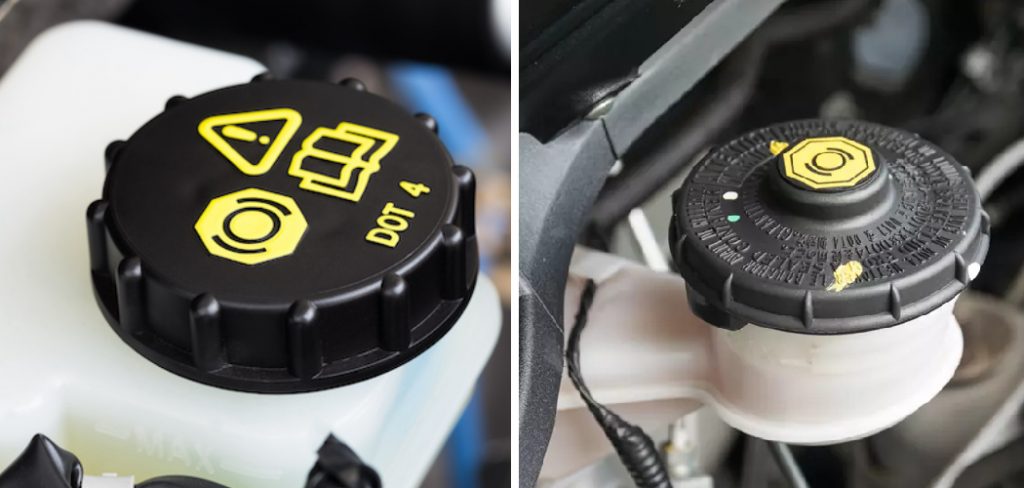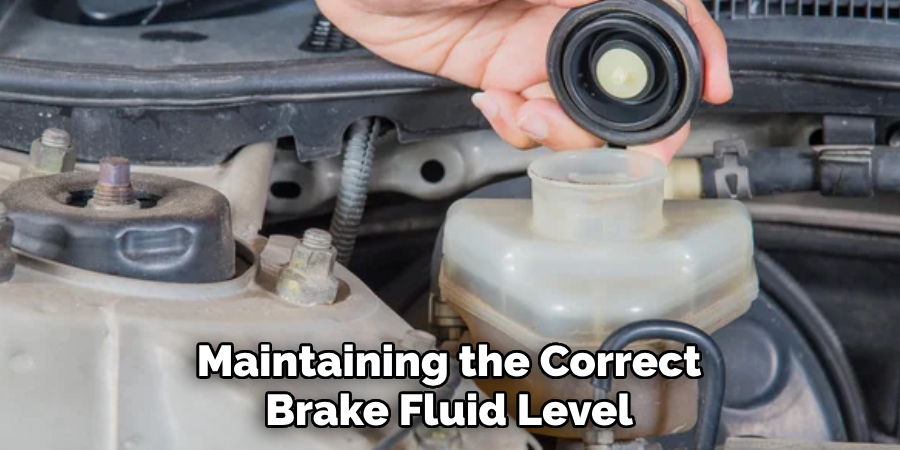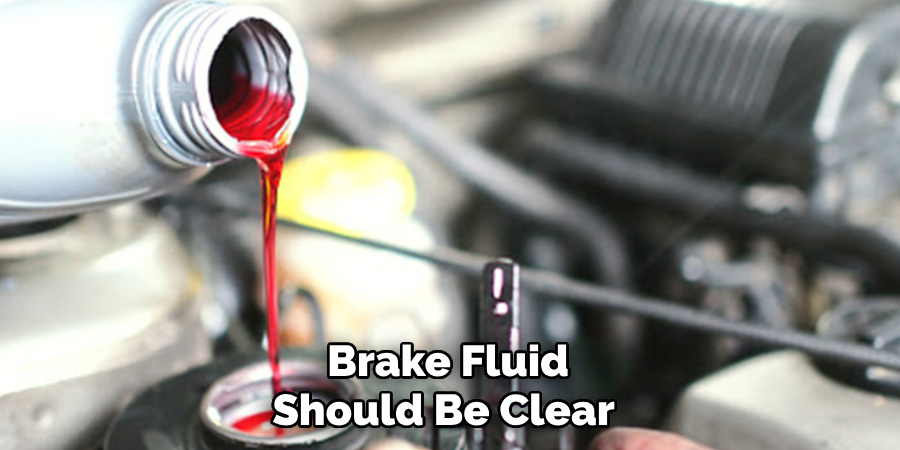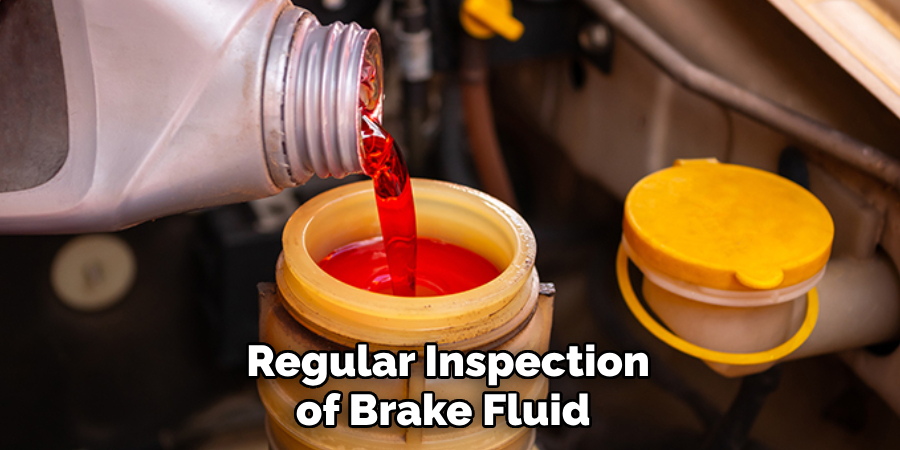Recognizing the signs that your vehicle needs brake fluid is paramount for maintaining optimal braking performance and ensuring your safety on the road. Brake fluid is a critical component of your car’s braking system, and its level and condition directly impact the efficiency of your brakes. In this guide, we will explore how to know you need brake fluid.

From understanding the importance of brake fluid in hydraulic brake systems to identifying symptoms like a spongy brake pedal or warning lights on your dashboard, this tutorial aims to equip you with the knowledge to assess and address brake fluid needs promptly. Stay ahead of potential issues, and gain the confidence to keep your brakes in top-notch condition by learning how to recognize when your vehicle requires attention to its brake fluid levels.
Importance of Brake Fluid in The Braking System
Brake fluid serves as the lifeblood of the hydraulic braking system, a fact often overlooked until braking performance is compromised. This non-compressible fluid is responsible for transferring the force from your brake pedal to the brake pads, ensuring reliable and immediate stopping power.
Without the correct amount of quality brake fluid, the system’s efficiency diminishes, leading to increased stopping distances and potential brake failure. Understanding the pivotal role that brake fluid plays can dramatically influence the maintenance practices of vehicle owners and underscore the necessity of regular brake fluid checks and replacements.
Importance of Addressing Brake Fluid Issues
Neglecting brake fluid maintenance can lead to grave consequences for your vehicle’s braking system and your safety. When brake fluid levels are low or the fluid is contaminated, it can result in decreased brake performance or even complete brake failure. Addressing brake fluid issues is therefore not only about prolonging the life of braking components but also about preventing accidents.
Promptly resolving brake fluid-related problems ensures that your vehicle can maintain maximal stopping power under various driving conditions. Regular inspections and fluid changes also prevent more costly repairs down the line, saving you time and money while keeping you and your passengers safe.

Different Types of Brake Fluid
When maintaining your vehicle’s braking system, it’s crucial to understand that not all brake fluids are the same. There are several types of brake fluid, classified primarily by their dot rating which includes DOT 3, DOT 4, DOT 5, and DOT 5.1, each with different properties and uses.
- DOT 3: This is a glycol-ether based fluid and has a lower boiling point compared to other types. It is commonly used in light-duty vehicles and is compatible with many braking systems.
- DOT 4: Also glycol-ether based, DOT 4 brake fluid has a higher boiling point, making it suitable for vehicles that undergo more intense driving conditions which may cause the braking system to heat up more.
- DOT 5: Unlike DOT 3 and DOT 4, DOT 5 brake fluid is silicone-based and doesn’t absorb water. It has a much higher boiling point which is advantageous in high-performance vehicles. However, it’s not compatible with some brake system materials and not recommended for systems that were originally designed for glycol-ether fluids.
- DOT 5.1: Similar to DOT 4 in its glycol-ether composition, but with a boiling point as high as DOT 5, DOT 5.1 is versatile for both high-performance applications and standard vehicles.
Knowing the differences between these types of brake fluids and consulting your vehicle’s manual to understand the manufacturer’s specifications are fundamental steps in ensuring your car’s braking system functions adequately. Each type of brake fluid has its respective advantages and is designed to meet specific performance requirements. It is essential to use the correct type of brake fluid to maintain the responsiveness and safety of your brakes.
Importance of Maintaining the Correct Brake Fluid Level

Maintaining the correct brake fluid level is essential for the consistent performance of your vehicle’s braking system. If the brake fluid level falls below the minimum mark, air can enter the brake lines, causing brake pedal sponginess and a decrease in braking efficiency. Conversely, an overfilled reservoir may lead to fluid leakage or damage when the system heats up and the fluid expands.
A proper level of brake fluid ensures that your vehicle’s hydraulic system can seamlessly transmit the pedal force to the brakes, allowing for quick and precise stops. In essence, checking your brake fluid regularly and keeping it at the appropriate level is an easy yet critical aspect of vehicle maintenance that helps prevent extensive brake system damage, costly repairs, and, most importantly, avoids compromising your safety.
10 Methods How to Know You Need Brake Fluid
1. Check the Brake Fluid Level on Your Vehicle’s Dashboard
The most obvious way to know if you need brake fluid is by checking the level on your vehicle’s dashboard. Most modern cars have a brake fluid warning light that will illuminate when the fluid is low. If you see this light, it’s time to add more brake fluid.
2. Notice a Change in Braking Performance
If you notice that your brakes are not as responsive as they used to be, it could be a sign of low brake fluid. This is because the brake system relies on hydraulic pressure from the fluid to engage the brakes and slow down or stop the vehicle.
3. Look for Leaks Under Your Car
A leak in your brake system can also indicate a need for more brake fluid. If you notice any puddles or drips under your car after it has been parked, it could be a sign that your brake lines or calipers are leaking and causing a decrease in fluid levels.
4. Check the Color of Your Brake Fluid
Brake fluid should be clear or slightly yellow in color when new. If you notice that your brake fluid is dark or murky, it may be time for a replacement. Over time, brake fluid can become contaminated with dirt and debris, which can affect its effectiveness.

5. Pay Attention to Strange Noises While Braking
Low levels of brake fluid can also cause strange noises when braking, such as squealing or grinding sounds. This could be due to air getting into the system due to low levels of fluid, causing vibrations and noise.
6. Feel for A Spongy or Soft Pedal
Another indicator of low brake fluid is a spongy or soft feeling when pressing down on the brake pedal. This means there is not enough pressure from the hydraulic system due to low levels of fluid.
7. Check for Warning Messages on Your Vehicle’s Computer System
Some newer vehicles have advanced computer systems that can detect when there is an issue with the brake fluid levels. If you see a warning message on your dashboard, it’s important to address it promptly.
8. Check the Date of Your Last Brake Fluid Flush
It is recommended to have your brake fluid flushed every 2-3 years or as specified in your vehicle’s manual. If it has been longer than this since your last flush, it may be time for a replacement.
9. Notice a Burning Smell While Driving
If you notice a burning smell while driving, it could be a sign that your brakes are overheating due to low levels of brake fluid. This can be dangerous and should be addressed immediately.
10. Have a Professional Inspection
If you are unsure about the condition of your brake fluid or if you suspect there may be an issue, it’s always best to have a professional mechanic inspect your vehicle. They can check the level and quality of your brake fluid and make any necessary recommendations for maintenance or repairs.
Inspecting Brake Fluid Quality
Regular inspection of brake fluid quality is crucial for maintaining effective braking performance and safety. To assess the quality of your brake fluid, start by examining its color and clarity.

Fresh brake fluid typically has a clear to pale yellow appearance, whereas fluid that appears dark, brown, or cloudy can indicate contamination or deterioration, suggesting that it may need to be replaced. Using a clean syringe or turkey baster, extract a small amount of fluid from the reservoir for a better look.
Conclusion
In conclusion, understanding the importance of brake fluid is crucial in maintaining your vehicle’s safety and performance. Knowing the signs that indicate a need for brake fluid is just as important as regularly checking and changing it. With this knowledge, you can avoid potentially dangerous situations on the road and ensure your car’s longevity. So remember, pay attention to your brakes, listen for any strange sounds or vibrations, check your brake pedal for a spongy feel, and keep an eye on the color of your brake fluid.
When in doubt, it’s always best to consult a professional mechanic. Don’t wait until it’s too late to recognize the need for brake fluid – stay vigilant and stay safe on the road! Hopefully, this article gave you some helpful tips about how to know you need brake fluid successfully, so now that you have the proper knowledge on how to get the job done, why not give it a try today?

Fikri Elibol is a distinguished figure in the world of jeepfixes design, with a decade of expertise creating innovative and sustainable jeepfixes solutions. His professional focus lies in merging traditional craftsmanship with modern manufacturing techniques, fostering designs that are both practical and environmentally conscious. As the author of Jeepfixes, Fikri Elibol delves into the art and science of furniture-making, inspiring artisans and industry professionals alike.
Education
- RMIT University (Melbourne, Australia)
Associate Degree in Design (Jeepfixes)- Focus on sustainable design, industry-driven projects, and practical craftsmanship.
- Gained hands-on experience with traditional and digital manufacturing tools, such as CAD and CNC software.
- Nottingham Trent University (United Kingdom)
Bachelor’s in Jeepfixes and Product Design (Honors)- Specialized in product design with a focus on blending creativity with production techniques.
- Participated in industry projects, working with companies like John Lewis and Vitsoe to gain real-world insights.
Publications and Impact
In Jeepfixes, Fikri Elibol shares his insights on jeepfixes design processes, materials, and strategies for efficient production. His writing bridges the gap between artisan knowledge and modern industry needs, making it a must-read for both budding designers and seasoned professionals.
